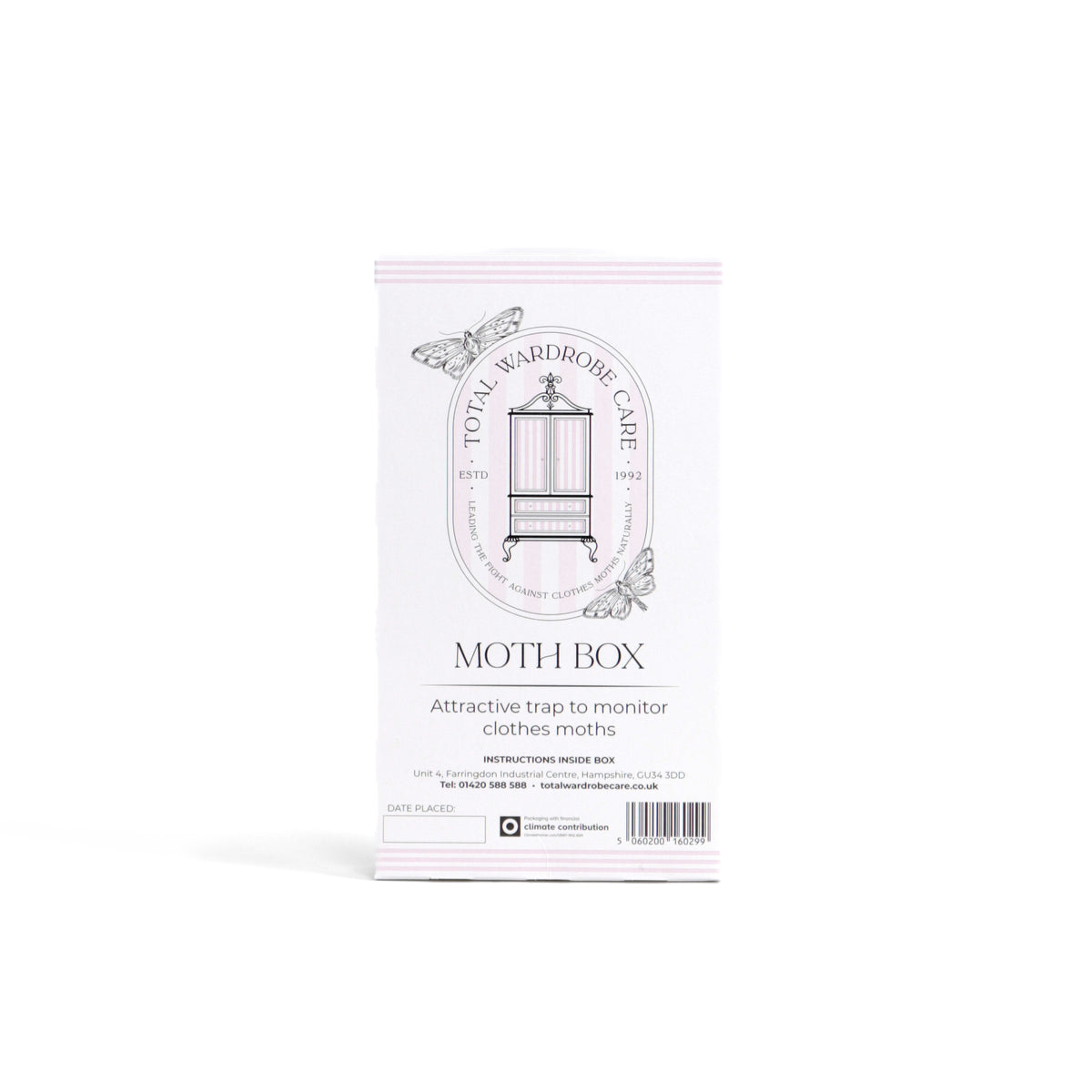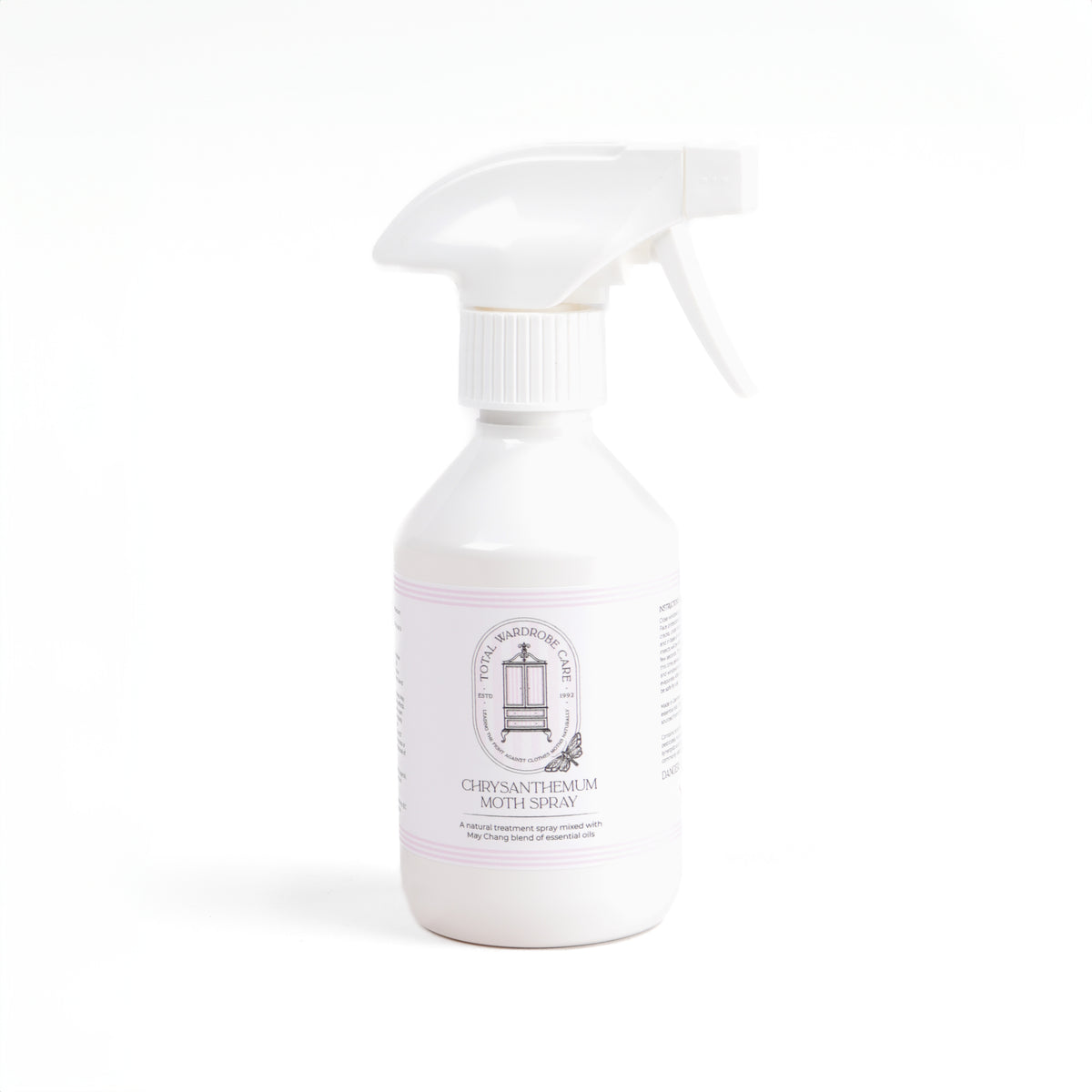To some it might seem an absurd question, but 'are clothes moth dangerous?' is something we are frequently asked. Don’t get us wrong, people don’t just stop me in the street to enquire, but among those of you who suspect you have these little beasts and are desperately searching for solutions, it’s one of a range of fears that you all have in common.
Most of us are not bug experts and we all fear what we know least about, so in this blog we hope to answer some of the common questions we get asked about clothes moths and also to provide some sensible and sound advice for dealing with a clothes moth infestation. This should give you back some control over your unwanted visitors. We all feel happier when we take back control!
CAN YOU SEE CLOTHES MOTHS?
The short answer is yes, you can see clothes moths but I need to elaborate here.
The first step to taking control of clothes moth is to confirm that it is in fact clothes moth that you have and this means searching for evidence with your own eyes.
There are 4 phases to the clothes moth lifecycle, egg, larvae (like a little white worm), pupae and adult moth. You can see all phases of the lifecycle but you have to look carefully and in the right places. The adult clothes moths, Tineola Bisselliella is not very big at all at 5 to 8mm long. They are a buff colour and they fly around the edges of rooms, usually the lower parts as they are not strong fliers. When they are stationary, they tuck their wings in so they look like a capital ‘I’. You can easily miss them especially if you have walls or furnishings in light neutral colours, that is until they flutter about and their silvery hue catches the light. In a heavy infestation however you will easily see the shimmering they make when they flutter.
The larvae grow from 1mm to 12mm long and to see them you need to look in amongst clothing. They will most likely be among folds of material, folded up jumpers and suit pockets are a common hiding place. Therefore, you will most likely catch them wiggling about when you are getting clothes out from storage.
It is possible to see the eggs if you have 20/20 vision though they are very small, about the size of a pin head. Again, you will most likely see them in stored clothes that you are getting out for the new season. They might look a little bit like specks of dandruff and you can easily pass them by if you’re not specifically looking for them. Often, instead of single eggs, you will see webbing, which looks like clumps of rolled up spider silk all bobbled together. This is called frass, a nice word for poo. The larvae also spin a silken case in which to pupate which is the same colour as the webbing.
It’s easier to confirm the presence of clothes moth with confidence if you have seen a range of evidence from the different phases of its lifecycle.
If you suspect you have clothes moth but are still not sure and want peace of mind, you can always use a Moth Box. This simple device has a sticky board inside which is infused with the pheromone that female clothes moths use to attract the males to mate. When placed in a room, it attracts males to the sticky board so if you find moths on the board, you can be confident that you need to take action. The Moth Box is particularly useful as an early warning sign and enables you to catch an infestation before it gets out of hand.
DO CLOTHES MOTHS BITE?
Clothes moths do not bite humans. The sole purpose of the adults is to reproduce and lay eggs before they die. Feeding is not necessary and as such they do not even have mouth parts. Clothes moth larvae cause damage to clothes by chewing through natural fabrics in search of the protein keratin, the larvae do have chewing mouth parts but they are not designed to bite humans.
CAN CLOTHES MOTHS MAKE YOU SICK?
For those of you who suffer from skin or respiratory allergies, it is possible that the presence of clothes moth adults and larvae can exacerbate symptoms. Moth wings are coated in tiny scales which detach easily and become part of the everyday dust in our homes, so this can play a part in the general symptoms experienced by people who already suffer with dust related allergies. Some people report little red bumps on their skin which is possibly caused by an allergen produced by the larvae. If you are experiencing either of the above, it would suggest a heavy infestation.
DO CLOTHES MOTHS HURT PETS?
It has been reported that certain moth species which infest dried foods can cause stomach upsets in dogs, however we could find no reports specific to clothes moths harming pets. Let's be sensible here, if your pets are consuming clothes moth (larvae or adults) they would have to be either eating your clothes and soft furnishings in which case we would say you have bigger problems. If they’re snapping away at fluttering adults then the moths will be visible to you anyway and you should take action.
NEED HELP WITH MOTHS?
Finding out you have a clothes moth infestation might be worrisome at first but rest assured, if you know what you’re looking for and have the right products to hand, getting rid of them is entirely achievable. Over the years we have developed a plethora of knowledge and a range of natural product which repel, confuse and kill clothes moth. Our Blog Pages offer a wide range of advice, including ‘What Materials Do Moths Eat’, with advice on exactly where to look for infestations, and ‘How to Solve a Clothes Moth Infestation’, which explains our ‘Locate, Eliminate, Confuse’ eradication programme and much more.
Please also feel free to Contact Us for friendly advice and remember, you are mightier than the moth!













